|
Joe and Duncan first met about 16 months ago. Duncan had been found running at large by Joe's neighbor. He was skin and bones and had multiple open wounds on his body. He was impounded in the city shelter where Joe began volunteering to help bathe and care for Duncan. Duncan is a sweet, big goofball of a dog, not unlike a small horse. Man and dog bonded immediately. After Duncan's owner came to reclaim him, Joe was told periodic welfare checks would be made every two weeks. This never happened. Fast forward. Joe learned Duncan was illegally tethered inside the backyard of a house occupied not by his owner but by a relative of the owner, in violation of city laws. I wonder now how very different the rest of this story could have been had the law been enforced and had periodic checks been made as Joe was told they would be. Joe checked on Duncan every couple of weeks and sought help from a local non-profit organization to get a doghouse for Duncan and set up a run line. After months of monitoring Duncan and as the weather turned colder, Joe approached the family where Duncan was kept and offered bedding and food. The offer was accepted. Joe gave Duncan fresh food and water, cleaned up his dog house and put out fresh bedding. Fast forward. During one of Joe's checks in late December, Duncan was no longer in the yard. He learned from the woman living in the house that Duncan had escaped and was impounded in the shelter again. Joe went to the shelter immediately and was assured Duncan would not be returned to the owner. Man and dog were reunited as Joe began advocating to find Duncan a good home. Joe was thrilled to learn that his work with Duncan had paid off and a family with two small children had met Duncan and decided to adopt him. They had spent an hour with Duncan and felt completely safe with him being around their 4 and 7 year-old daughters. Not so fast. Within hours of the adoption, the new family called the shelter for help. Duncan (who had likely never lived inside a house) was jumping and reacting to the ceiling fan. "What should we do?" the family asked. Rather than being given help, the family was told to return Duncan to the shelter which they did. I've never understood this response. Dogs have to adjust. Dogs have to decompress. Dogs have to get used to new experiences, particularly when they have lived outside their whole lives. My expectation is that the shelter would guide the family and not be so quick to suggest they return a dog who may behave the same way in another home in the future. We will never really know exactly what happened next and where the miscommunication happened, but shelter staff were led to believe Duncan had tried to bite a child. When he was returned to the shelter, he was met by staff members who were prepared to deal with an aggressive dog. A catch pole was used. Duncan did not react well. Slow down. As soon as Joe learned of Duncan's return, he dug into what had happened. Bite a child? Not the Duncan he knows. He was able to speak with the adoptive family who explained Duncan reacted to a fan, did not try to bite a child and there was a terrible breakdown in communication. When Joe explained to the mother of the children that a reported bite history could lead to Duncan's death, she went to the shelter to make sure Duncan's record was clear. She engaged with Duncan while he was there and he was reportedly happy to see her. Joe told shelter staff he wanted to adopt Duncan and was told no. Stop. Despite this positive interaction with the former adopter and based on the false report about Duncan's bite attempt and his reaction to the catch pole, Duncan was housed in a back kennel in the shelter not accessible to the public. Staff were afraid of the "aggressive" and "dangerous dog" who had allegedly tried to bite a child. Because of their fear, Duncan spent weeks in a kennel without being allowed outside and with very limited interaction with anyone. He was medicated. A representative from a local rescue group tried to pull Duncan from the shelter so Joe could foster him. The rescuer, who had pulled "behavior" dogs from the shelter before, offered to sign a liability waiver as had been done in the past and was told no. Duncan had been deemed aggressive and was to be "euthanized." Wrong. And wrong What followed to save the life of a single dog was nothing short of inspiring and amazing. Joe would not take no for an answer. He began interacting with local behavior experts Lisa and Jason Maasen from The Grounded Pooch, with veterinarians, with a former city council member and with other advocates in the community to fight for Duncan's life. To help convince city officials that Lisa and Jason had experience working with dogs like Duncan before and had been able to help them, two dozen happy clients wrote letters of recommendation with next to no notice in support of the Maasens. Joe sent email messages, he made phone calls, he sought and attended meetings. He explained that Duncan had been unfairly labeled as aggressive and fought to be able to adopt Duncan himself. With the help of what I began to call Team Duncan and after weeks of effort, Joe was able to convince city officials to allow him to be reunited with Duncan at the shelter under the supervision of the shelter director, the city attorney, and the city administrator to determine if Joe and Duncan could still interact safety toward them leaving the building together. Joe was told the city had never done this before and officials were taking a risk because of Joe's Herculean efforts to save one dog. He was required to undergo a home visit to make sure he was prepared to have Duncan in his home. Plans were then put in place for Joe to visit Duncan in his kennel with people standing by in the event Duncan reacted aggressively so they could intervene. Perhaps only Joe and Duncan knew what would happen next. And it was beautiful. When Joe approached the kennel, Duncan wagged his tail. He was happy to see his friend. Joe was allowed to take Duncan out to a play paddock to be truly reunited. I dare you to watch this and not be affected in some way. Joe took Duncan home that day as part of a foster-to-adopt plan which required him to check in weekly and have periodic home visits. He worked the plan that had been developed to integrate Duncan into his home with his other dog and his cat with ongoing help from Lisa and Jason and made amazing progress. The bond between man and dog prevailed. Joe told me on April 5th, more than 2 months after he took Duncan home, that he was allowed to adopt Duncan. Finally. Man and dog together for the rest of Duncan's life, an outcome about which I am grateful. The lives of dogs are ended in shelters every day under the guise of behavior, using labels like "aggressive" and "public safety risk." I do not dispute that some of those labels are warranted and there are genuine reasons to end the life of a dog who may injure or kill someone. I've seen the results of a dog bite fatality attack, and it was gruesome. We know from decades of animal sheltering, however, that how dogs behave in shelters says more about the shelter than the dog. We also know there are ways to set dogs up for success to maximize their ability to be adopted through proper interaction with them, informed kennel assignments and enrichment programs using regular walks, using dog play groups and by providing mental stimulation. We also know that all adopters need adoption counseling, need to be taught about dog decompression and need to be provided with support following the adoption and not just told to bring a dog back who is having trouble adjusting. This can often include common sense guidance and it can include referral to training resources for more long-term solutions.
At one point when Joe was interacting with a senior member of the shelter staff and asked if Duncan had ever bitten anyone of which she knew, the answer was "no. But he might." And therein lies the problem. All dogs have teeth. All dogs bite. They bite themselves; they bite each other, and they use their mouths to communicate. To presume that all dogs are dangerous just because they "might" bite someone is a sure way to end the lives of countless dogs for no good reason at all. And it is wrong. Hundreds of dogs die in shelters like this one every year for issues related to behavior - real or imagined. This particular shelter is currently ending he lives of 1 of every 3 dogs entering the building for "behavior." Let that sink in. More than 30% do not make it out of the building alive. Most are just identification numbers on a report, at least to city officials. They all had lives before entering the shelter, they all had names and they all deserved a chance to be treated as individual lives with value. We will never know how many Duncans are now gone not because they were dangerous but because of failures of a shelter system when solutions are known. This is a tragedy that is entirely preventable but it has to be seen as that - a needless tragedy - for anything to change in the midst of a shelter culture in which this much death is not only accepted but defended. My personal hope is that what happened with Duncan softened some hearts with senior officials with the city and will lead to changes at the shelter. Time will tell. I hold on to happy beginnings like this knowing change comes slowly. And that those who hear the least are those who will not listen.
2 Comments
I was a good dog. I didn't know what that word meant when I first went to live with my people. I didn't know any of their words and they didn't understand mine. But they were patient and they taught me. I learned their words and they learned my body language I use to communicate. I learned words like sit and stay and come and inside and outside and cookie and ball and "do your business" and no, but I don't hear that word too much. I know I'm a good dog because they tell me all the time. Sometimes they say the word a lot like I'm a good good good dog and they look at me with bright eyes and soft faces and I know they love me. My people spend time with me. We play and run and they make funny noises and they touch me and I feel good. They brush my fur and my teeth and sometimes they kiss my ears. On some days they leave to go someplace and I either rest on my bed in the place where my people sleep or I rest in my room . I like my room because I can see around me and I feel safe there. I can always tell when my people are about to come back by their smell. It's strong when they leave and when it goes away to a certain point, I know that means they will be home soon. They take me out to do my business and to play and then maybe we will go an R-I-D-E. They think I don't know that word when they say it longer but I do. Sometimes we just rest and they watch a box on the wall that sometimes has animals and other dogs. I get excited when I hear dogs barking on the wall box. Sometimes I get special treats. Every day is a good day. Then my life changed. My people came home and a door was open and I saw what I was sure was their R-I-D-E so I ran after it as it went away. I heard my people calling for me but I was sure one of them was leaving again and it was a race so I ran and ran and ran. By the time I stopped I didn't know where I was. I thought I could use smells to find my way home but the sky got wet and I had trouble. A person who was not one of my people yelled at me and told me to go. I little person ran at me and threw things at me. I was so afraid. Later a group of other people surrounded me and tried to catch me but I didn't know them and I was afraid. I ran away and almost got hit by a ride. There was a really loud noise then and so I ran some more. I got so tired. I slept for a long time in some trees and then I smelled and heard a person walking toward me really slowly. He was talking sweet and calm but he was not my person and I could tell he was afraid so I was afraid of him. I lowered my head, tucked my tail and showed my teeth to tell him I was afraid. I let him put a hard thing that was on a long stick around my neck and let him put me in a box on a ride. I thought he might take me to my people. The box smelled like so many other dogs and then when it moved and I could not see, I was more afraid than ever in my life. The person took me to a building and walked me inside with the thing on a long stick around my neck and he put me in a small room. But it was not like my room with my people. It was cold and the floor was wet and I could only see through the front as people talked and walked by. It wasn't as bad as the box that moved on a ride, but I was still so scared. I could smell other dogs but I could not see them. Some barked again and again, people yelled and I had no idea what was happening to me. I tried to tell the people how afraid I was the only way I knew how but they didn't understand me like my people did. Time went by. When the people left each day, they were gone much longer than my people were ever gone. I was in my room so long so that could not hold my business and I felt bad about that. A person came and took me outside one day and I was so happy, because I thought my family had found me and I was leaving the building. I was outside for a little while which was a nice break and made me feel better because I could feel the sun and smell the grass and the trees and see the birds. I finally felt I could relax. Then he went to take me back inside and I was confused. Where were my people? Why did I have to go back into that place that made me afraid? I laid on the ground and tried to make myself as small as possible so the person would not see me, but he did. He dragged me back inside by a leash around my neck and put me back in the room that was wet again. Time went on like this and I got frustrated and sad. People walked by me and dogs barked and I felt so alone and confused. Why did I have to stay in this place? I was a good dog. I stayed in my little room so long that I kept making a mess. I just could not hold it any longer. One day a person came and took me to a different small room. There was a person in there who seemed excited to see me so I was excited to see her. She seemed happy and smiled at me and tried to get me to play with toys. I got closer to her to smell her to see if she smelled like my people. I was going to let her touch me. Before I knew it, she took my face into her hands and put her face right in front of my face. I was afraid she was going to hurt me so growled and I nipped at her to tell her I didn't like that. She yelled and people came into the small room and took me back to my little room. I could tell they were angry as they said no no no no over and over again and told me I was a bad dog. I was upset and more confused and afraid than ever so I laid there and tried to understand what was happening to me. I never felt so alone surrounded by so many people and dogs. After time had passed and the smells of the people were less, a new person came and took me out of the room that smelled like my business. I was happy at first. I thought he was taking me outside or that my family had finally found me. We walked down a hall to a new room and he put me on a table. I could tell he was angry and upset. He would not look at me and he told me he was sorry. I didn't understand that word. He moved some things around on a table and the next thing I knew I was very sleepy. I was a good dog. I shared a poster on my Paws4Change Facebook page last week that got a lot of attention. The message was simple. For reasons I don't know, the post has been shared more than 125,000 times. I see this as a good thing. My hope is that the message resonated with people and it made them think. As is the case with social media and the Internet, this also means the post attracted attention of people who did not agree with my message. I'm used to that and I usually see it as an opportunity to share my views and perhaps educate some people in some ways. I had numerous posts on my page to the effect that behavior euthanasia of shelter dogs is a good and necessary thing, that I was promoting having aggressive dogs adopted out into our communities who could endanger people, that I had no idea how hard people in shelters work and that not all dogs can be saved. These were not comments seeking discussion. I tried to reply to a few, only to have the commenters double down on how clueless, irresponsible and uniformed I am. About half were from people in other countries. I ultimately deleted the most hostile comments and banned the people who made them from my page. I just don't have the time to monitor that type of behavior and even if I did, there was no conversation to be had. These were comments by people who were advocating for the deaths of shelter dogs, most of whom assumed my poster related to aggression when it did not. Dogs are just as apt to be destroyed in animal shelters for failing to make eye contact, for "pancaking," for displays of barrier aggression (which is not actually aggression at all), for being uncooperative or for demonstrating fear-based behaviors which have nothing to do with aggression. I am fully aware that there are some dogs who are genuinely dangerous and cannot be allowed in our communities. As someone who works in the legal field, I've seen the results of dog bite related fatalities by genuinely dangerous dogs and will never be heard promoting the concept of "save them all." I am also fully aware that most dogs who enter shelters, whether they lived inside or outside, whether they were loved completely or simply tolerated, do poorly inside traditional animals shelters and behave in ways which have nothing to do with the behavior they normally display when they are outside the shelter building. I've shared this quote from the National Canine Research Council more times than I can count, but it is a truth we must consider related to every dog who enters an animal shelter. Shelter evaluations may tell us as much or more about the effect of the shelter as they do about the individual dogs. Shelters are noisy, alien environments, filled with strange smells, unfamiliar people, and dogs they may hear, but not see. We should not be surprised that some dogs may. . . behave differently when confined in a shelter, with its barrage of stressors that the dog cannot control, than they will in the safe, secure, predictable environment of a home, cared for by people with whom they are able to form positive attachments. Good dogs die in our tax funded animal shelters every day, across the country. I stand firm in my position that it is never appropriate to end the life of a healthy and treatable dog for behavior created by the conditions in which the dog is housed. For the vast majority of dogs who show fear-based and negative behaviors caused by the shelter environment, those behaviors can be prevented by getting the dog out of the shelter quickly to a rescue group or into a foster home. In those cases when rescue release or foster placement is not readily available, the dog should be treated as if he or she has a critical medical issue and should be cared for using an established protocol to give the dog every opportunity to leave the shelter alive. The least we can do for shelter dogs is to treat them as if they were, or could have been, someone's beloved companion. Because in most cases that's exactly what they were prior to their lives being ended for "behavior." Many dogs destroyed in shelters for "behavior" are very young. Their changing hormones affect how they respond to stress, they have a decreased ability to process information from their environment and they have less control over their behavior related to their frontal cortex (Behavior Vets). Before you presume that all dogs destroyed for "behavior" in shelters somehow deserved that fate, give some thought to how your own dog would behave in a shelter environment which is nothing like the home he or she has known. Do not assume that dogs destroyed for behavior actually did anything serious enough to end their lives. The dog who dies could be your own if you are unable to find your lost dog 1) because you don't know where to look; or 2) because the shelter which houses dogs for your area is open such limited hours that you ability to find your dog is impeded. You can learn more about this issue from the following publications: No Kill Advocacy Center: Animal Evaluation Matrix No Kill Advocacy Center: No Dog Left Behind Willful Ignorance is not Bliss No Dog Left Behind Leave No Dog or Cat Behind - Updated with Studies National Canine Research Council Research Library The story I shared above is fictional, but it is based on an actual dog named Riley. Riley was a young German Shepherd who was taken to a visitation room in a shelter to meet a potential adopter. The woman held Riley's face in both of her hands and leaned towards Riley who growled and then bit the woman in the nose. I presume the visit was unsupervised or the woman would not have been allowed to treat a dog she had just met in this manner. Riley was later destroyed for "behavior." This was a difficult blog to write. The lives of dogs like Riley must mean more than a line item on a monthly shelter report. Even though the story is fictional, there are many layers to consider which are not covered in this blog related to personal responsibility (ensuring lost pets can be identified, making contact with local animal control authorities and shelters when a pet goes missing) and the responsibility of places called shelters (return-to-owner protocols by animal control officers in the field, housing and enrichment programs for shelter dogs, introduction of dogs to potential adopters and fosters, and evaluation and rehabilitation of dogs who do poorly in a traditional shelter environment). The focus of this blog is not on what the family of the fictional dog could have or should have done. It is about a good dog whose life was ended needlessly not because this was a bad or dangerous dog but because she was failed by the shelter in which she was housed.
I''m having a bad day. It relates to no kill principles, aggression in dogs, volunteering and a dog named Lulu. My head is not particularly clear, but I will share anyway so I can try to move on. I have written many times about the phrase "no kill" and what it means to me and the people in my circles. No kill is an animal sheltering philosophy in which healthy and treatable animals are not destroyed for space, for convenience or just because that is what has historically been done. Shelters which euthanize animals to alleviate suffering can still be no kill because they are doing what is ethical and right; no one would argue that animals should be kept alive if they are in pain or are so terribly injured that they simply cannot be saved. Shelters which destroy dogs who are genuinely dangerous for legal reasons related to public safety can also be no kill shelters. It is not reasonable to expect shelters to allow all dogs to be adopted out into our communities if those dogs may ultimately present a public safety risk and either injure or kill someone. I've dealt with legal cases about dog bite fatality attacks and they are both gruesome and preventable. Determining which dogs are actually dangerous is the tricky part. Although numerous dogs are destroyed in our nation’s animal shelters for behavioral issues which are categorized in a number of ways (fear, aggression, public safety and “high arousal”) experts have opined that shelter evaluations of dogs are no better than a coin toss and the number of dogs who are genuinely dangerous make up less than 1 percent of all shelter intake. Shelters are nothing at all like the homes or lives dogs may have known outside the shelter environment, even if that life was not good. As was stated in an article published by the National Canine Research Council: Shelter evaluations may tell us as much or more about the effect of the shelter as they do about the individual dogs. Shelters are noisy, alien environments, filled with strange smells, unfamiliar people, and dogs they may hear, but not see. We should not be surprised that some dogs may... behave differently when confined in a shelter, with its barrage of stressors that the dog cannot control, than they will in the safe, secure, predictable environment of a home, cared for by people with whom they are able to form positive attachments. I have known for a very long time that the shelter in the city where I work destroys large numbers of dogs for behavior. Some months are better than others. I get the reports from the city each month and I see the columns on the reports which set forth the identification number of each dog destroyed, the perceived breed, the age estimate and other details. The majority of the dogs are young. I, and members of my no kill advocacy group, have tried to get the city help on this issue. We've helped pay for experts to train the shelter staff. We've tried to connect the senior shelter staff with people in other places who can provide guidance and make recommendations on how to keep more dogs alive. There is only so much we can do because we lack any real influence to make things change for the better. Even though I know about dogs being destroyed, I decided the time had come to volunteer at the shelter. I refused to volunteer for years during the period when large numbers of healthy and treatable animals were destroyed. My position was that I would no sooner volunteer at a kill shelter than I would work the production line at a chicken processing plant. Because the city has made a lot of progress - and because it is the city's position that it has not destroyed any dogs for space or convenience for four years - I decided the time had come to give it a shot. I have never given any value to the opinion of my many critics over the years who have professed that I am not allowed to have an opinion about what happens at the shelter unless I volunteer there (as if volunteering is the Golden Ticket to free speech). I can absolutely have an opinion about how tax dollars are spent, But I was spending less time on political advocacy locally so I told myself that I could spend some time volunteering instead. I volunteered at the shelter for a few months and admit that I enjoyed it even though my advocacy has marked me as the enemy in the minds of some. It was nice to take my lunch break, put on some jeans and and old pair of tennis shoes and go walk dogs, engage with dogs and feed them special treats. I did a fundraiser to help the shelter buy some great slip leads and leashes. I created posters to help promote donation of toys and treats. I began making short promotional videos for some dogs to help market them with the public. One day a couple of weeks ago I met a singer/songwriter friend of mine at the shelter as she performed "shelter serenades" while I took some video footage. I fully admit that my time at the shelter was not a big deal in terms of the overall need. My hour or so a week was not a huge contribution, but I wanted to do something and I felt like I was helping in some way even though I was not welcome at the shelter by many of the other volunteers. It did not last.
On Friday I met a dog named Lulu. I had seem images of her on social media used to help promote her on Valentine's Day. One was of her wearing beads and a headband with hearts on it; I remember thinking to myself that not many dogs would tolerate having that much "stuff" put on them and then actually sit still for photographs. I knew from contacts that Lulu had been showing signs of stress inside the shelter. On the day I met her, a volunteer had taken LuLu outside for a walk. I talked to Lulu, touched her, took some photos and recorded her walking nicely on a leash so I could make a short promotional video to help her get adopted. She was happy. She was calm. I learned later that afternoon that she had lunged at her kennel door when meeting a potential adopter and had tried to bite a volunteer. I finished the video of her and shared it with others on Monday, hoping someone would see it and decide to adopt her or foster her. I was sure that if she could be introduced to someone not inside the shelter, but outside, she may have a chance to be placed. I've seen dogs who were incredibly stressed inside shelters change completely once they are no longer confined in that environment. One woman did offer to foster her. But it did not matter. I found out today that Lulu was killed yesterday. Some of the words used to explain the decision were, "she had become unsafe" and "we were worried about her potential for harming people." I appreciate the fact that some dogs are broken and are unsafe. I do not think we can "save them all." I do think we can save almost all of them and that it takes a commitment to try everything before we give up. We need to look for every opportunity to keep the dogs who are struggling the most alive. A foster home. Housing the dog outside in a kennel for a few hours a day to get them out of the shelter building itself. Working with a contract behaviorist. I have a hard time reconciling the image of the happy dog wearing beads and my memories of the dog walking calmly on a leash with a decision to end her life three days later. Grief makes no sense. I will grieve for the dog named Lulu whom I just met not only because she is gone but because she represents so many other dogs just like her. I'm sorry we failed you, Lulu. You were beautiful. You were smart. And this image of you is forever seared in my memory. A dog is a dog is a dog is a dog. I have long stood against breed discriminatory legislation and breed specific legislation. It is my genuine belief that dogs are products of the manner in which they are treated immeasurably more so than the breed they are perceived to be. I got deep into this subject back in 2009 when I was asked by my local animal shelter director to write a research paper advocating adoption of pit bull type dogs. She claimed she would use the paper to help persuade city officials and long-time members of her staff that adopting out dogs believed to be “pit bulls” was something her shelter should be doing. I have blogged on my research paper before (which I later updated in 2014) and won't revisit the entire topic here. If you'd like to read the paper, you will find it here. If you would like to look at the hundreds of pages of research, you will find it here. I was brought back to this topic of breed bias recently when I learned that the very shelter director who asked me to write a research paper almost a decade ago either never read the paper or has never taken any steps to educate herself on this topic even though she is a licensed veterinarian. I learned recently that she not only relies on but “studies” a website called Dogsbite.org and that she truly believes that pit bull type dogs are inherently dangerous. No. No. No and no. It seems that not a week goes by when I don't hear of someone singing the praises of Dogsbite.org. The site is run by a web designer and self-professed fortune teller named Colleen Lynn who was once bitten by a pit bull type dog. I am sorry she was bitten. Taking that personal experience and using it to create a platform which is based not on science or actual research is both irresponsible and incredibly harmful to all dogs and all dog owners. The site is based, on its own admission, by media reports which are notoriously unreliable and more often than not wrong. Others have written about the website before me on more than one occasion. One glance at the data for my state shows that the information is focused on pit bull type dogs and to the exclusion of other breeds. The 2012 dog bite fatality attack I became involved with indirectly in 2014 due to my job involved Rottweilers so you won't find any mention of it on Colleen Lynn's website. I rely on research from the National Canine Research Council and from reliable sources like the Animal Farm Foundation. I believe the JAVMA study about dog bite related fatalities and I believe in the research of Karen Delise which is based not on media reports but on official records like law enforcement reports. I have communicated with Karen on more than one occasion related to her research of dog bite fatalities in my state, referring her to law enforcement authorities as part of her research. If you have never taken the time to look at the NCRC website or read Karen's book, "The Pitbull Placebo: The Media, Myth and Politics of Canine Aggression," you owe it to yourself to do so. The reasons for actual dog attacks (as opposed to incidents of simple and avoidable injuries) are often complex, but the answer to preventing dog attacks is relatively simple: humane care and control of dogs is often all that is needed to prevent most dog attacks. The National Canine Research Council's investigations into dog bite-related fatalities reveals the majority of these tragic cases involved circumstances where owners failed to provide necessary care and human control of their dogs: 1) failure by dog owners to spay or neuter dogs not involved in a responsible breeding program; 2) maintaining dogs in semi-isolation on chains or in pens; 3) allowing dogs to run loose; 4) neglecting or abusing dogs; 5) maintaining dogs not as household pets, but as guard dogs, fighting dogs, intimidation dogs, breeding dogs or yard dogs; and 6) allowing children to interact with unfamiliar dogs. The 2016 Final Report on Dog Bite-Related Fatalities by the National Canine Research Council was most recently updated on March 8, 2018. If confirmed the data in the 2013 JAVMA Study and states: MULTIPLE FACTORS CONTINUE TO CO-OCCUR THAT ARE WITHIN THE CONTROL OF OWNERS. THE CONCLUSION OF EXPERTS: I realize that the topic of dog attacks on people is an emotional one. The fatality case I was involved with indirectly was the most gruesome case I have dealt with in more than 25 years in the legal profession. But we do our society, our families, our dogs in animal shelters and our family dogs a complete disservice when we focus on breed - because there is no scientific basis to show that it has anything at all with dog attacks and fatalities. A dog is a dog is a dog is a dog. When dogs are treated well and socialized to people, they make wonderful companions. When dogs are not treated well, are used as resident animals, are not socialized to people and not sterilized, they all become potentially dangerous no matter what they look like and no matter what breed we think they are. If you really think that pit bull type dogs are naturally aggressive, I challenge you to educate yourself on the topic. You can start with my research paper, which is not particularly long, and go from there. If your lead an animal shelter that destroys dogs based on perceived breed, shame on you. It's time to stop relying on junk science and time to get educated not only on the causes of dog aggression but about how you can better market pit bull type dogs to get them through the system and into good homes. If you are not willing to do that, it truly is time to find another occupation which does not involve making decisions regarding who lives and who dies. Now. (image of Roo Yori and Wallace courtesy of Roo and Josh Grenell; infographic images courtesy of Animal Farm Foundation)
 I’ve always had a soft spot for abused and neglected animals. I see us as stewards of the companion animals we domesticated and for me, there is just no excuse for treating them poorly. When it comes to owned animals, my position is that if you don’t really care about that animal and are not prepared to treat him or her as a member of your family or a valued partner in some way, you should not have animals at all. In doing so, I make no distinction based on income. I am aware of homeless people who take better care of their pets than do some celebrities who treat animals like furry accessories or as some status symbol, only to discard them when caring for them calls for too much responsibility. The topic of chained dogs is one I’m particularly passionate about. It all goes back to our dog, Snake, for me. She had been living chained to a tree with a heavy logging chain in Northern California when Rich rescued her years ago with the help of a game warden. She was not socialized to people and we will never know how she was treated in her developmental months as a young dog. She had no fur on her neck due to the chain and she “pancaked” in the early days when Rich took her home. She was simply terrified. The veterinarian Rich took her to said her hair may never grow back. It did and she thrived in time with the help of the man who is my own personal dog whisperer and who, in all likelihood, is really part dog. Every time I see a dog on a chain or a tether, forced to live outside 24/7/365 with no meaningful human contact, I ask myself one simple question: why? Why even have a dog if that animal is essentially imprisoned to a patch of dirt? It makes absolutely no sense to me and it is considered inhumane by every reputable animal welfare organization in our country. Dogs who are forced to live outside and confined to a limited space are not protective of the people who live inside a home near them. They become protective of the space in which they are forced to live. They do not make good living security systems who will bark when an intruder comes near. They are apt to either bark at everyone and every other animal or they do not bark at all. Dogs who live this way are considered “resident dogs” by subject matter experts like Karen Delise of the National Canine Research Council. They may not be aggressive towards the people who own them, but they can be incredibly dangerous to other people, with children and the elderly being most at risk of being bitten or fatally attacked. February is Unchain a Dog Month. The second week in February is Have a Heart for Chained Dogs Week. In honor of this week and month, I am happy to report that a dog ordinance I have been advancing in the city where I live was approved by my city council last night. It is now illegal to keep a dog confined by direct-point chaining or tethering to a stationary object in our city. Dogs may be contained inside a residential structure, inside a fenced yard, in a pen or with a run or trolley line. In addition to containment methods, our ordinance has provisions for adequate shelter and nutrition and prohibits dogs being kept outside during dangerous conditions. This particular part of the ordinance is intentionally vague so it can relate to either extreme temperatures or weather events like tornado warnings. I would have liked to have the ordinance prohibit perpetual penning of dogs, but we could not find a way to include a provision like that and have it enforceable at this point. A lot of people presume I advanced the ordinance due to my love for dogs and while that is absolutely true to a degree, it is not the whole story. I work in the legal field and one of the most gruesome cases I ever dealt with was in 2014 when we defended a dog bite fatality case. WWII Veteran Donald Thomas went to check his mail in September of 2012 and was attacked and killed by two dogs who belonged to neighbors. His wife came home from the store to find the dogs attacking her husband. She was unable to get the dogs to stop and called the police. An officer arrived within minutes and shot both dogs. It was too late. Mr. Thomas was dead. It was later discovered that the people who owned the dogs had 33 other dogs chained in their backyard. They were convicted of manslaughter and criminally negligent homicide. Mrs. Thomas later sued the city for wrongful death. So yes, this issue is about animal welfare. But it is even more about public safety and about ensuring dogs are cared for in ways which keeps them from being weaponized. If you keep your dog chained or tethered in your yard, please. Find another way to make that dog part of your family and keep him or her from becoming a public safety risk. If you are an animal advocate like me and you want to advance legislation in your own area to help keep your community safe and ensure dogs receive better care, have no fear. Take a chance and speak out for what you believe in. Dogs cannot speak for themselves and in the end, you are their voice. (image courtesy of Dana Kay Mattox Deutsch)
If you've spent any amount of time around dogs, you have probably been bitten. As Karen Delise of the National Canine Research Council put so clearly years ago, "all dogs have teeth. All dogs bite. They bite other animals, they bite each other and they bite humans." This is Dog Bite Prevention Week. It is an annual event promoted by the American Veterinary Medical Association in concert with the US Post Office and the American Academy of Pediatrics. As we mark this week, it is worth taking a few minutes to consider the differences between actual dog attacks and dog bites, almost all of which are entirely preventable. Dog Attacks The reasons for actual dog attacks (as opposed to incidents of simple and avoidable injuries) are often complex, but the answer to preventing dog attacks is relatively simple: humane care and control of dogs is often all that is needed to prevent most dog attacks. The National Canine Research Council's investigations into dog bite-related fatalities reveals the majority of these tragic cases involved circumstances where owners failed to provide necessary care and human control of their dogs: 1) failure by dog owners to spay or neuter dogs not involved in a responsible breeding program; 2) maintaining dogs in semi-isolation on chains or in pens; 3) allowing dogs to run loose; 4) neglecting or abusing dogs; 5) maintaining dogs not as household pets, but as guard dogs, fighting dogs, intimidation dogs, breeding dogs or yard dogs; and 6) allowing children to interact with unfamiliar dogs. Dog Bites The AVMA reports that there is an estimated population of 70 million dogs living in U.S. households. Millions of people - most of them children - are bitten by dogs every year. As much as we love dogs, the reality in our society is that a lot of people don't know much about dog psychology and behavior and even those people who claim to be dog lovers engage in behavior which can lead to dog bites simply by treating dogs too much like people and not enough like the animals they are. Each year, more than 4.5 million people in the U.S. are bitten by dogs. Children are, by far, the most common victims of dogs bites and are far more likely to be severely injured. Senior citizens are the second most common dog bite victims. How do you avoid being bitten by a dog? The Humane Society of the United States provides the following tips: -be polite and respect the dog's personal space. Never approach an unfamiliar dog, especially one who's tied or confined behind a fence or in a car. Don't pet a dog-even your own-without letting him see and sniff you first. -don't disturb a dog while she's sleeping, eating, chewing on a toy or caring for puppies. Be cautious around strange dogs. Always assume that a dog who doesn't know you may see you as an intruder or a threat. -pay attention to the dog's body language. Put a safe amount of space between yourself and a dog if you see the following signals indicating that the dog is uncomfortable and might feel the need to bite: tensed body, stiff tail, pulled back head and/or ears, furrowed brow, eyes rolled so the whites are visible, yawning, flicking tongue, intense stare or backing away. Any of these signs mean the dog is trying to tell you something. For comprehensive coverage about dog body language, I encourage you to take a few minutes to read this information from Labrador Training HQ. It is incredibly detailed and can help you to be truly informed on this subject. Dogs enrich our lives in countless ways. It is well worth the effort to educate ourselves on how to prevent both attacks and bites so that we keep our families safe, avoid tragedies and keep good dogs from being destroyed in our animal shelters due to something we either did - or failed to do - which led to a dog bite. It was Friday when I saw him for the first time. I backed down the driveway into the road, waved goodbye to the boys and there it was. A dog pen. On our neighbor's property. In which sat a yellow lab. In the rain.
We moved to our home only after being driven away from what we thought was our retirement parcel. Our state gives more legal rights to shooting ranges than to property owners and I just couldn't tolerate being forced to listen to automatic weapons fire while inside our home. Leaving was incredibly hard. We chose our new house because it's inside city limits (meaning we do have property owner rights), because it has a few acres and because no one near us had dogs living outside 24/7/365 on a chain or in a pen. So much for that plan. I understand that I live in a region with cultural differences related to domesticated animals. I realize that some people were raised to believe that dogs don't belong inside because they are animals. But hasn't the time come to move past the 1870s? Haven't we learned enough about the intelligence of dogs and their emotional needs to do better for them than to imprison them in pens while denying their nature as pack animals? Because of my job, I know far too well what happens when we force man's best friend to live as a resident dog, separated from our homes and more focused on a 100 square feet of dirt or the world found within the length of a chain than on anything else. I know about fatality attacks by dogs who were not properly socialized to people and who paid for our failings with their lives. The dangers of resident dogs are well documented by people much smarter than me. To me, forcing a dog to live outside chained or penned is abuse and simply abhorrent. If you put your dog in a pen outside for short periods of time in order to get fresh air and because you lack a fully fenced yard, I get that. But to put your dog inside a pen where he or she can only stand up, walk a few feet and turn around makes absolutely no sense to me. To force that dog to live in those conditions perpetually, regardless of weather conditions and with no human interaction beyond providing them food makes even less sense to me. A dog kept chained (or confined to a pen) whether for hours, days, months, or years can suffer tremendous psychological damage. Under these limited conditions, dogs are forced to eat, drink, urinate and defecate all in the same small area. Because of the dog’s minimal physical space and lack of socialization, dogs kept penned or chained can become exceedingly hyper and aggressive. A penned or chained dog is not protective of the people who live in a nearby home. They are protective of and territorial toward the area in which they are confined. Left unsocialized to people on a regular basis, they can become aggressive toward anyone who comes near them, including unsupervised children. The National Canine Research Council's investigations into dog bite-related fatalities reveals the majority of these tragic cases involved circumstances where owners failed to provide necessary care and human control of their dogs: 1) failure by dog owners to spay or neuter dogs not involved in a responsible breeding program; 2) maintaining dogs in semi-isolation on chains or in pens; 3) allowing dogs to run loose; 4) neglecting or abusing dogs; 5) maintaining dogs not as household pets, but as guard dogs, fighting dogs, intimidation dogs, breeding dogs or yard dogs; and 6) allowing children to interact with unfamiliar dogs. My dog will never live outside. We keep him safe and dry. We provide him with the veterinary care he needs, the companionship he needs and he is a member of our family. He is not our child, but we are as responsible for his needs as if he were our child. If yours is a resident dog, why do you even have a dog in the first place? I don't expect an answer to that. It just makes no sense to me at all. And it never will. Your dog deserves better than to be a prisoner in your yard. I once had a shelter director tell me that to a dog, an animal shelter is like a prison. This was years ago. I've thought about her words many times over the years and as I have become more familiar with how most traditional shelters operate as compared to more progressive shelters. When I was contacted by a woman recently who tried to help a stray dog and whose story did not end well., I felt compelled to write something about the difference between a true shelter and an animal holding and disposal facility. In one city, a large dog with no name is seen running across a major roadway and stops near a local business. We'll call him Max. A concerned citizen tries to help Max. She attempts to get him into her car so that she can take him to a local rescue group or get help. Max is fearful, won't get in her car and someone at the business calls animal control. Max is taken to the local “animal shelter” to be held for five days. The citizen calls about Max to inquire about him. She is told that she either has to find Max's owner or find a rescue group to take Max in order to save his life. She tries valiantly to find someone to help and can find no one. She cannot take Max herself because she already has a house full of dogs. As the days pass, Max becomes more stressed. He first tries to bite a kennel worker. A couple of days later he tries to bite a child who put her hand through the kennel fencing. A few days after that, Max lunges at a shelter worker and another dog who are passing by his kennel. And that was it for Max. He was destroyed. Max was not in a shelter. Max was in a holding facility. What no doubt began as confusion for him escalated to fear and anxiety, leading to the point where he was deemed too dangerous to live. In another city, a dog named Forest enters a shelter. He's a unaltered lab/pit bull type mix who charges at the kennel door and shows his teeth. Luckily for Forest, he is in a true shelter, as most of us would interpret that word. Rather than let Forest simply exist in the shelter or deteriorate with time, the staff there work with him. They make time for him. They talk to him, sit outside the kennel door to simply be near him and they work slowly but surely to form a bond. This story has a happy ending. It turns out Forest is a sweet and gentle dog who thinks kissing people is wonderful and who is a perfect candidate for adoption. In writing about Forest's care, the shelter director said this: “If your cat or dog was ever lost and brought to a shelter, became petrified due to a shelter's scary, new environment (like Forest), and was tossed into a caged kennel (like Forest), and was separated from his or her family making it hard to trust the strangers imprisoning him or her (like Forest was), wouldn't you want shelter staff and volunteers to explore every option possible before killing your dog? I like to think we all would want this for our own animals. For this reason, we explore every option available for every animal that comes to us. Forest and so many other animals are safe and alive today because we do what we need to do to get animals past the anxiety of being dropped off in a terrifying building like an animal shelter." It has been said that the manner in which dogs behave in shelters tell us “as much or more about the effect of the shelter as they do about the individual dogs. Shelters are noisy, alien environments, filled with strange smells, unfamiliar people, and dogs they may hear, but not see. In light of all these factors, we should not be surprised that some dogs. . .will behave differently when confined in a shelter, with its barrage of stressors that the dog cannot control, than they will in the safe, secure, predictable environment of a home, cared for by people with whom they are able to form positive attachment.” (National Canine Research Council.) Every dog entering a place we call a shelter should be given the same opportunity for redemption as was Forest. Places which fail to take even a small amount of time to help set dogs up for success should not be called shelters at all. Let's call them holding and disposal facilities so the public they serve is under no illusions about what happens there. I know that some dogs are just broken. They are genuinely dangerous to people and should not be allowed to be adopted out into our communities. But I also know that any dog I have ever loved would be terrified, scared, traumatized and anxious in a traditional shelter environment and would have been destroyed. And for me, that is the biggest tragedy of all. (image courtesy of Terrah Johnson)
I am considered "the animal person" where I work. Because of my advocacy, people seek me out on a variety of subjects and when they need help. I am not the Dog or Cat Whisperer, but I do my best to help people and point them in the right direction. A co-worker emailed me yesterday to tell me she wanted to get a puppy for her five year-old daughter and wanted my help. I asked her to come see me instead. We had a long conversation (which I warned her would sound more like a lecture) about why she wanted to get a dog, what kind of dog she thought she wanted, why she wanted a puppy, etc. She said that she had grown up with a dog who was her best friend and she wanted that for her daughter. She wanted a puppy and wanted a small breed dog so her daughter would have a companion and would have someone to hug on and play with. No. No. No. And No. The conversation took a different turn from there. We talked about how much work it is to have a puppy, about how many small breed dogs do not do well with children and about how hugging a dog is just not a good idea. I told her point blank that if her daughter needed something to hug, to get her a stuffed toy. We talked about how bringing any dog into a home is a 15 to 20 year commitment not to be taken lightly. In the end, we had a good conversation. I believe my co-worker’s heart is in the right place and she does want to get a dog for all the right reasons. She has plans today to meet a medium-sized rescue dog whose life is at risk but who is described as both "sweet" and "cuddly." Have I hugged our dog? Sure. More than my husband prefers. But we’ve known each other for 16 years and I know enough about our dog’s body language to know when a soft hug will be well received as opposed to resulting in some vocalization because he isn’t feeling well. You can kiss your spouse. You can hug your child. But if you really want to show your dog how much you love him or her, learn about dog behavior and about what your dog needs from you. And if you want to spend some quality time together and bond - take your dog for a walk. Canine Body Language Successfully Adopting a Rescue Dog The Data Says "Don't Hug the Dog" Canine Body Language From Labrador Training HQ (very comprehensive and well worth the read) |
AuthorI am an animal welfare advocate. My goal is to help people understand some basic issues related to companion animals in America. Awareness leads to education leads to action leads to change. Archives
July 2024
Categories
All
image courtesy of Terrah Johnson
|
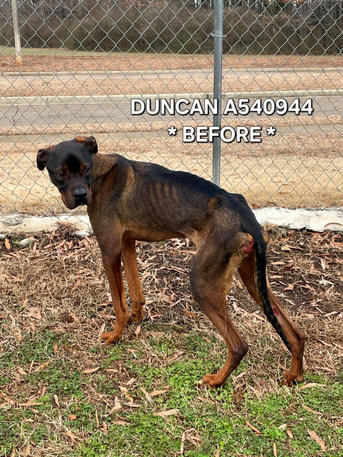
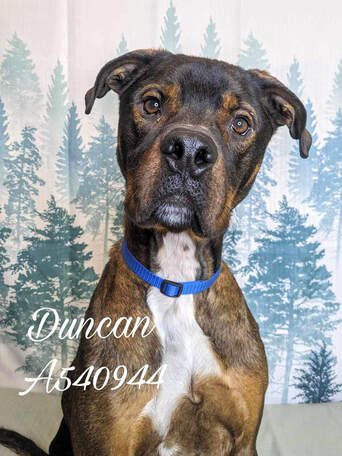
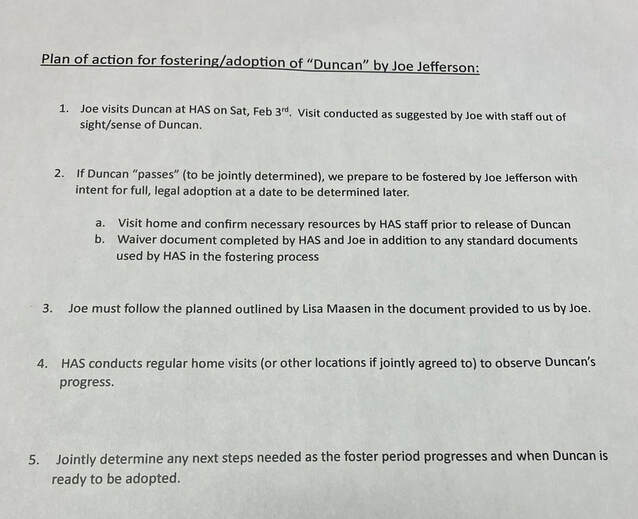
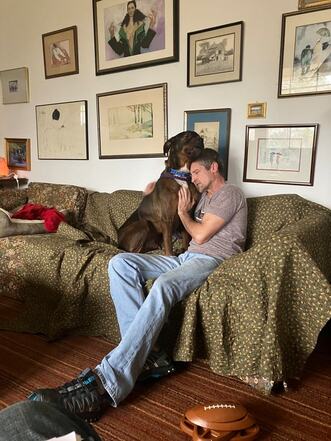
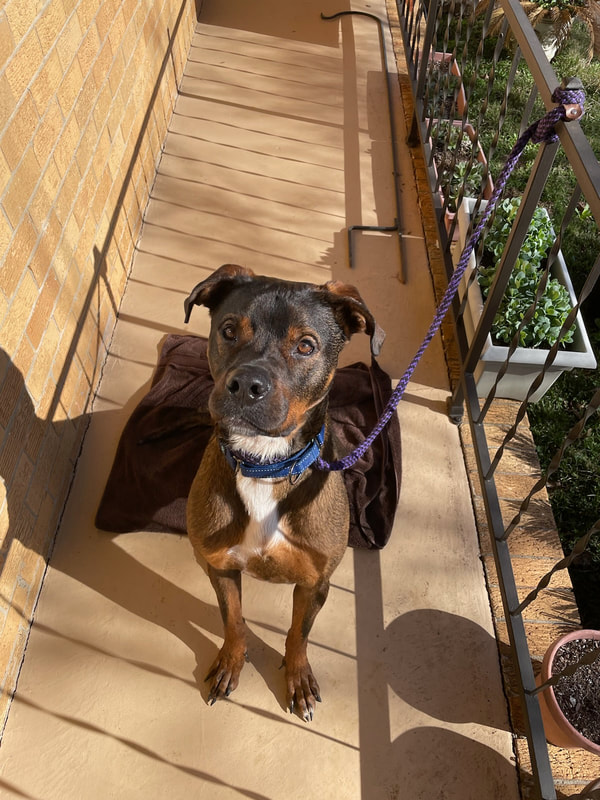
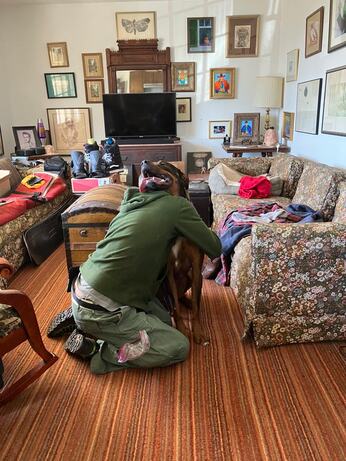



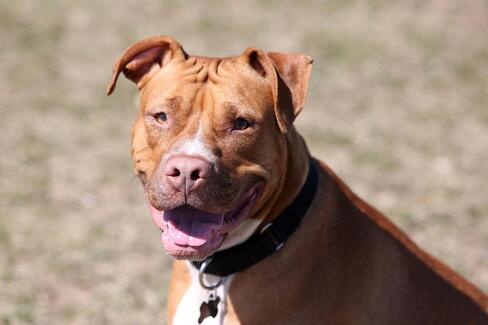


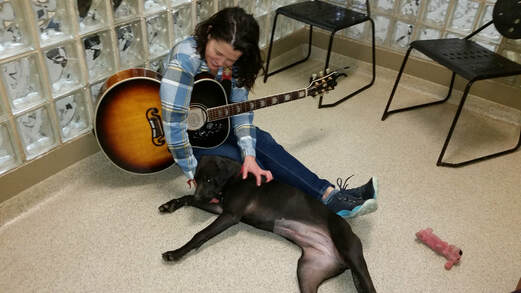
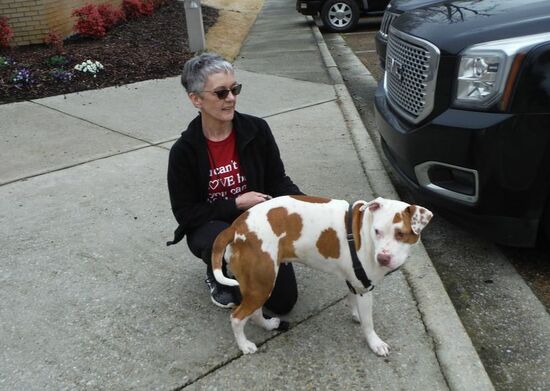
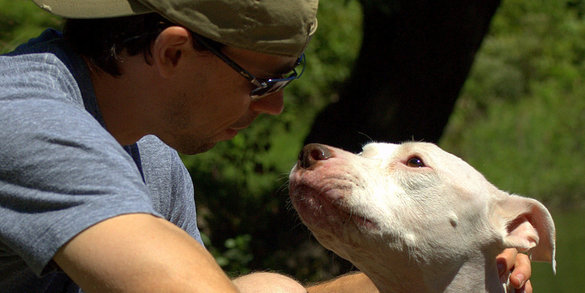
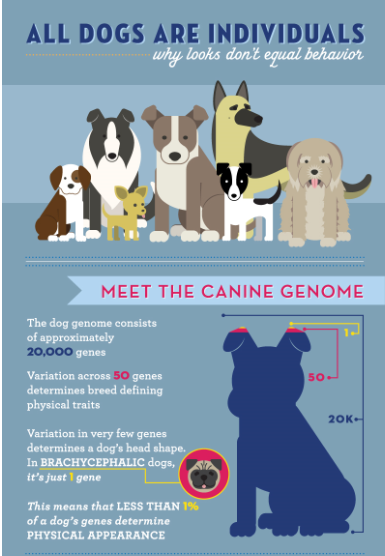
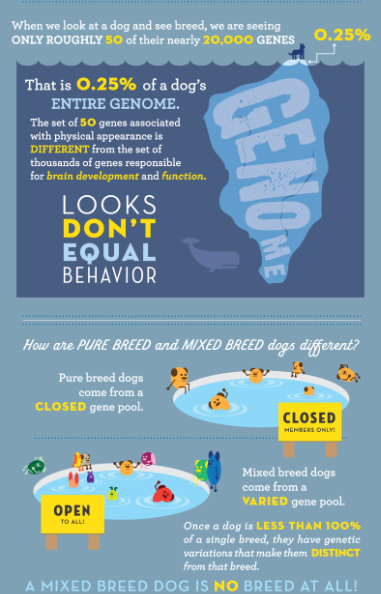
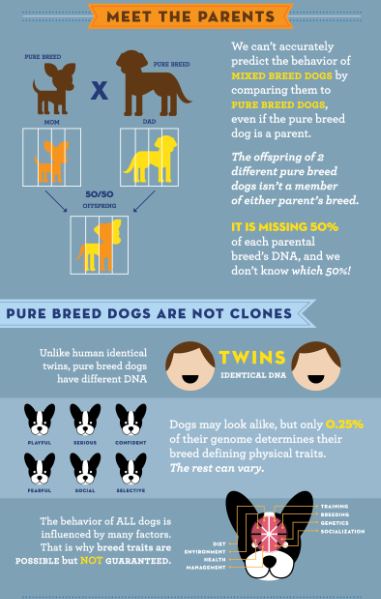
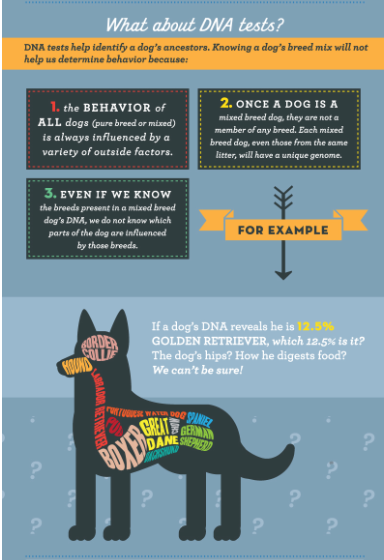
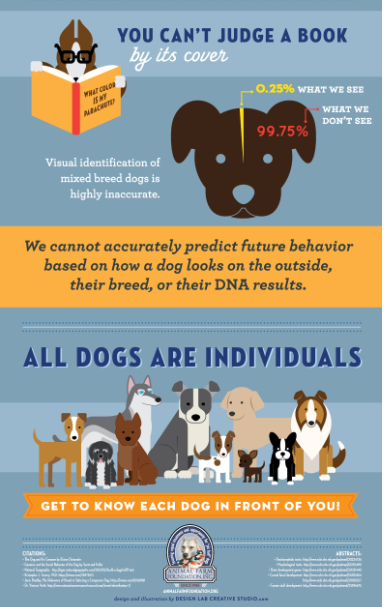



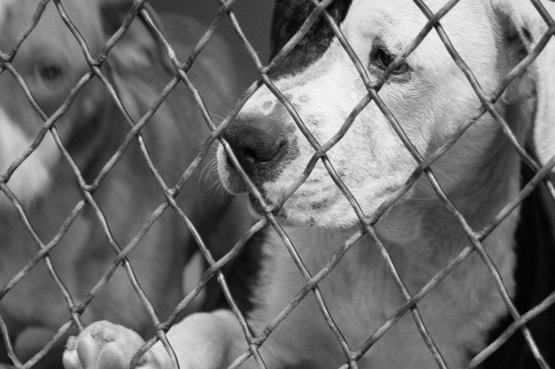
 RSS Feed
RSS Feed